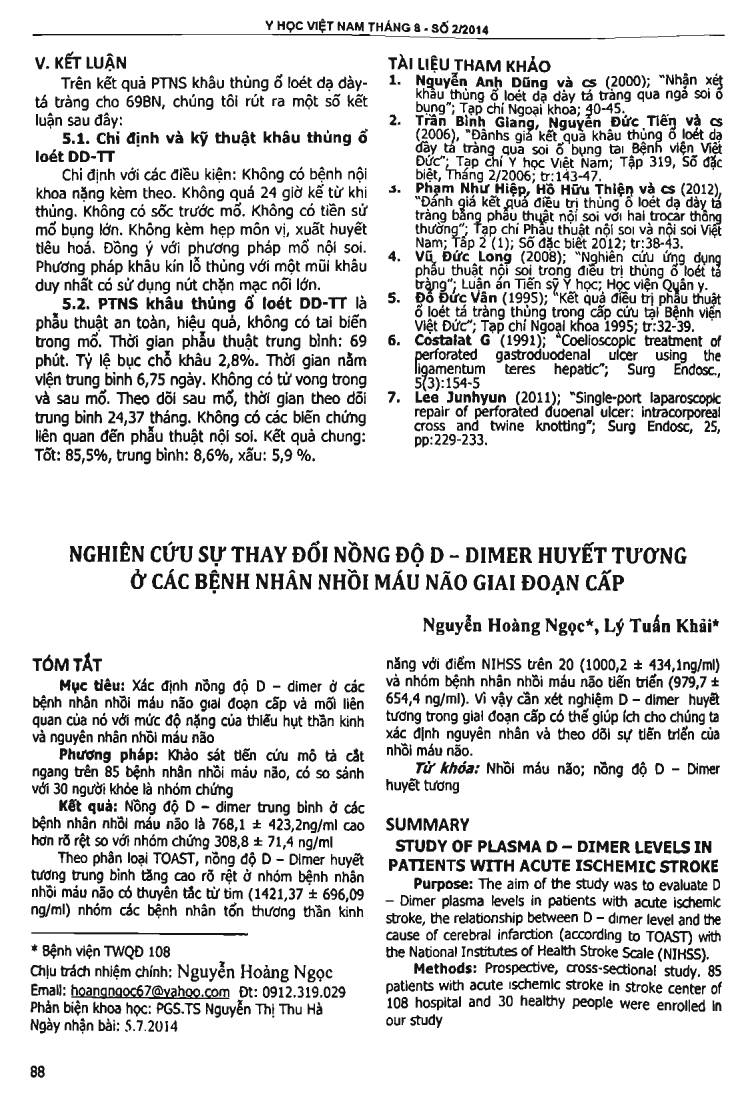
Purpose: The aim of the study was to evaluate D - Dimer plasma levels in patients with acute ischemic stroke, the relationship between D - dimer level and the cause of cerebral infarction (according to TOAST) with the National Institutes of Health Stroke Scale (NIHSS). Methods: Prospective, cross-sectional study. 85 patients with acute ischemic stroke in stroke center of 108 hospital and 30 healthy people were enrolled in the study. Results:The plasma concentration of D - dimer of patients with cerebral infarction were significantly higher than the control group. The average concentration was 768.1 + or - 423,2ng I ml. The control group was 308.8 + or - 71.4 ng I ml. The mean concentration of D - dimer level in plasma significantly was higher in patients with cerebral infarction according to the TOAST criteria: cardioembolic stroke (1421.37 + or - 696.09 ng I ml) and patients with neurological damage according to NIHSS over 20 (1000,2 + or - 434,1ng I ml) and cerebral infarction patients progressed (979.7 + or - 654.4 ng I ml). Conclusion: Plasma D - Dimer level changes variably accrding to the cause of acute ischemic stroke, especially, there is significant correlation between plasma D -dimer level and cardioembolic stroke. Therefore the authors should test D - dimer plasma during the acute phase, it may help us to determine the cause and to monitor the progression of cerebral infarction.
- Đăng nhập để gửi ý kiến
